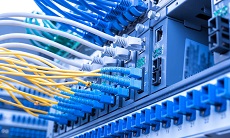
Internet connection choices differ depending on the ISP and the location. Before choosing an Internet package, home internet cheap plan, and connection type, consumers should think about the following factors: connection performance or frequency, affordability, accessibility, dependability, and convenience.
We suggest that you study the various types of Internet connections and connection speeds present on the marketplace today in order to choose which home Internet cheap plan is appropriate for you.
Understanding the Variations in Internet Connections
When deciding which Internet speed and connection type are best for you or your home, it’s essential to understand the differences between each connection. There are a variety of ways to link computers, desktops, cell phones, game consoles, e-readers, and tablets to the internet in today’s world. The following are some of the most often utilized Internet connections.
Mobile
Voice services with Internet access are available from a variety of mobile phone and smartphone carriers. Mobile Internet connections offer fast speeds and enable you to surf the web.
WIFI hotspots
WiFi Hotspots are locations that provide Internet access over a wireless local area network (WLAN), which is connected to an Internet service supplier via a router. WiFi technology, which allows electronic equipment to access the internet or share data wirelessly through radio waves, is used in hotspots. Hotspots can be phone-based or stand-alone, private, or public access.
Dial-up
To access the Internet through a dial-up connection, users must connect their phone line to a laptop. This sort of connectivity, often known as analog, prevents customers from utilizing their phone network to make or receive calls while on the Internet.
A dial-up connection used to be one of the most prevalent Internet connection types; however, it is now obsolete.
Broadband
Either cable or telephone providers supply this high-speed Internet connection. Broadband Internet is one of the quickest alternatives available, as it sends enormous amounts of data over numerous data channels. Broadband is a word that refers to a large amount of data transfer. DSL and cable Internet connections, for example, are called high-bandwidth connections. Despite the fact that many DSL connections qualify as broadband, not all broadband services are DSL.
DSL
DSL (Digital Subscriber Connection) uses an existing 2-wire copper telephone line linked to a person’s house to offer service simultaneously as a landline phone. Customers can still make phone calls while browsing the web.
Cable
Broadband access is a type of cable Internet connection. Users can access the Internet through cable Television lines using a cable modem. Cable modems may provide incredibly fast Internet connectivity, making cable a feasible choice for many people.
Satellite
A satellite Internet connectivity may be accessible in some regions where a broadband link is not yet accessible. A modem is used for satellite connectivity, the same as it is for wireless access.
ISDN
ISDN (Integrated Services Digital Network) enables users to transfer data, audio, and video content across digital or traditional phone lines. An ISDN adaptor must be installed at both ends of the transmission—on the user’s end and the Internet connection supplier’s end.






